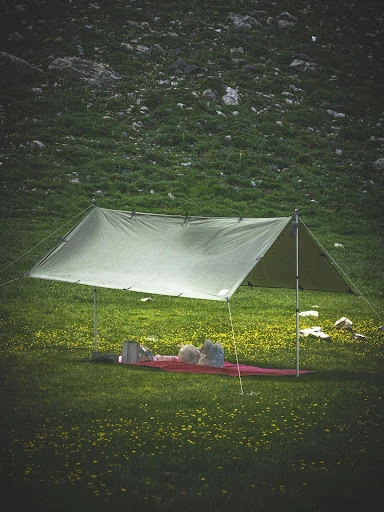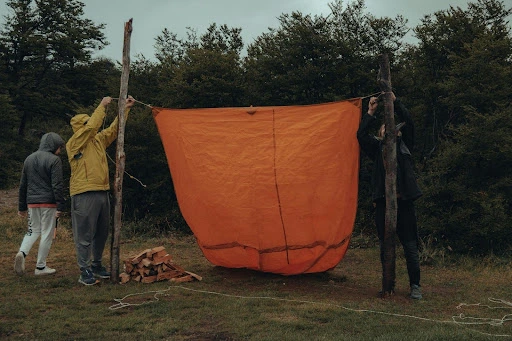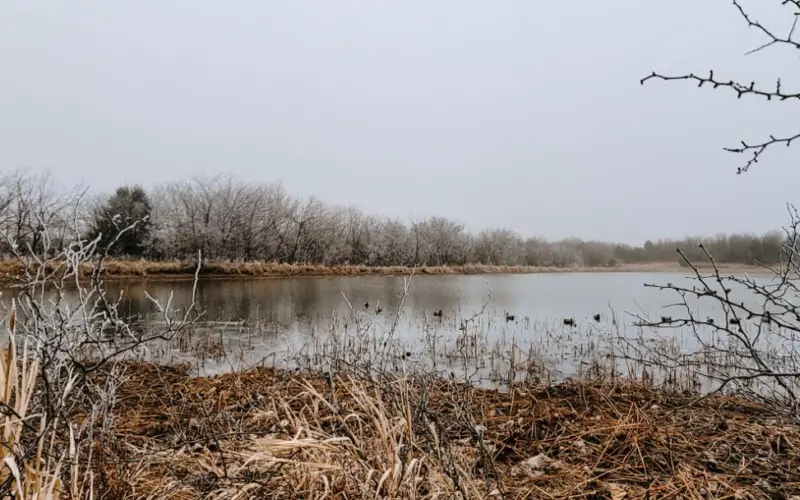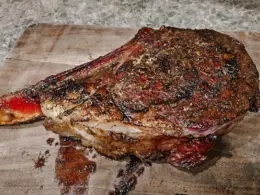When the mercury dips and the wind howls, most people will be quick to jump into their tents. But for those who don’t want to feel closed in and prefer sleeping under the stars, a good quality tarp is handy to have.
It provides a critical layer of protection against the elements, offering shelter from the wind, rain, and snow. They pack up much lighter than tents and can be deployed in a variety of locations. Some tarps are even big enough that you can create your own makeshift tent out of them!
This guide will teach you what to look out for if you want to choose a tarp for cold-weather camping.
Table of Contents
What Tarp Materials Are Best?
There are a variety of materials that tarps can be made of, each with its strengths, weaknesses, and cost. Each type presents unique advantages and features, making it a decision as detailed as selecting the right tent. If you live in a climate with harsh winters and strong winds, choose a more robust tarp than if you live in a mild climate with little precipitation.
Polyethylene Tarps
Polyethylene tarps, also known as poly tarps, are a staple in the camping world. Known for their durability and water resistance, these tarps are ideal for shielding campers from wet conditions. These items are widely available in hardware stores, but they are not generally praised for their longevity or quiet operation.
Their woven fabric is coated in a polyethylene layer, offering excellent resistance to tearing and UV damage. However, their robustness comes with added weight, which might not be ideal for backpackers. Once you open one up you won’t be able to get it back to its original size again.
In cold weather camping, poly tarps shine as ground covers or makeshift shelters. Their ability to withstand harsh winds and heavy snow loads makes them a favorite among many outdoor enthusiasts. While they might not be the lightest option, their reliability in adverse conditions often justifies their heft.
Nylon Tarps
If portability is your priority, nylon tarps offer a great lightweight solution. These tarps are favored by backpackers due to their exceptional strength-to-weight ratio. Made from woven nylon fibers, they are treated with waterproof coatings, making them suitable for rain and snow.
However, their lightweight nature can sometimes compromise their ability to withstand prolonged exposure to UV rays. They also may not handle snow loads as well as a heavy-duty tarp. Most people consider these a step above poly tarps in terms of quality and packability.
Canvas Tarps
For those who appreciate classic materials, canvas tarps bring a touch of nostalgia to modern camping. Made from cotton or a blend of natural fibers, canvas tarps are incredibly breathable, reducing condensation inside your shelter.
They are highly resistant to abrasion, making them long-lasting choices for campers who value durability.
While canvas tarps are excellent at providing insulation and breathability, they require more maintenance than their synthetic counterparts. Regular waterproofing treatments are necessary to maintain their protective qualities, especially in wet conditions. They can also be quite a bit heavier than other tarps, but they would be able to hold up against snowfalls much more effectively.
Silnylon Tarps
Silnylon tarps represent the cutting edge of tarp technology. Crafted from nylon impregnated with silicone, these tarps offer outstanding water resistance and strength. Despite their lightweight, they boast impressive durability, making them a popular choice for minimalist campers and ultralight backpackers.
In cold weather camping, silnylon tarps excel as versatile shelters and canopies. Their compact size and featherweight construction make them easy to pack and set up, even in challenging conditions. While they may come with a higher price tag, their performance in extreme environments is worth the investment.
If you are going to be using these during a snowfall then ensuring that you have it staked out properly will mitigate any sagging from buildup.
What Else Should You Consider?
Once you’ve chosen the material you want then you can start to look at other things such as size, weight, and additional features to help you against the elements.
Overall Tarp Size
The first thing to think about is the number of people under it and the intended use of the tarp. A larger tarp also gives you the ability to pitch it steeper so that rain will fall off of it without getting in underneath the tarp. If you are going to be sleeping in a hammock under the tarp then that is also advantageous as you don’t want your butt to be poking out underneath it.
How Much it Weighs
Tarps are traditionally much smaller than tents when folded up. But if you’re using a poly tarp or a heavy canvas tarp, you might have to adjust your pack to fit it in properly. Poly tarps, in particular, may not weigh a lot, but they are certainly large in general.
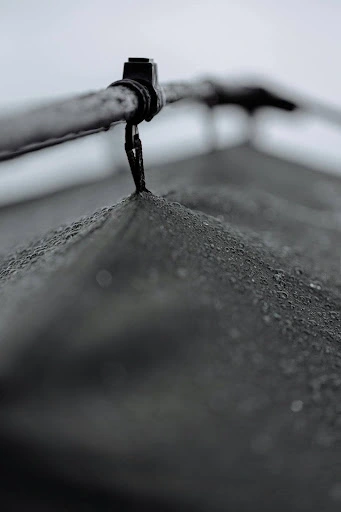
The Amount of Tie-Outs
Look for reinforced grommets, adjustable guy lines, and seam sealing to ensure maximum protection against wind and precipitation. A tarp with multiple tie-down points offers flexibility in setup, allowing you to adapt your shelter to changing weather conditions.
For example, tarps with four or more tie-outs on one side can be folded inward to create “storm doors,” effectively closing you into the tarp itself. This is handy when precipitation is unpredictable and coming from all directions.
Final Thoughts
While I’m not necessarily a fan of sleeping under a tarp unless it involves a hammock, there is a really satisfying feeling when you’re out in cold weather hanging out under a tarp. I will often use tarp setups for my outdoor kitchens or as a gathering place for when people want to hang out at a campsite. I seldom leave the truck behind without a tarp ready to go for a makeshift shelter.


